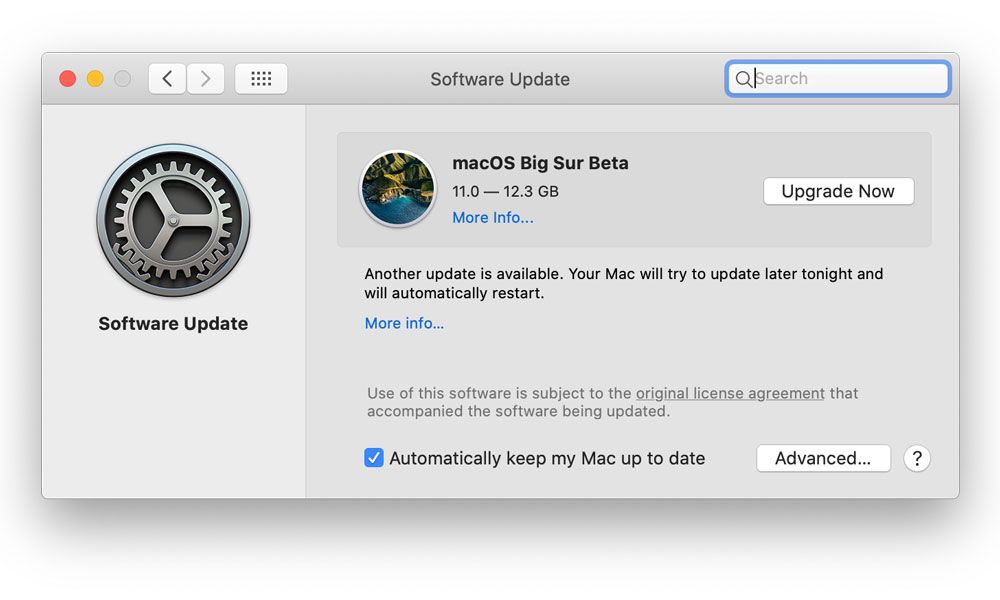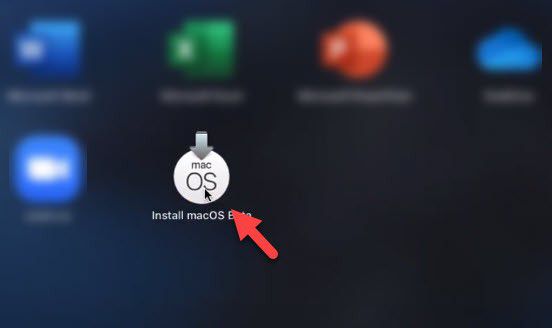Install Macos Big Sur On Unsupported Macs
How To Upgrade an Older Mac To macOS Big Sur. Anyone with an incompatible Mac will have noticed that Software Update doesn’t give you the option to install Big Sur. To upgrade you’ll need a patcher to trick Software Update into thinking your computer is compatible. But before you get started, there are a few things you need to do. Step 1: Create a Backup. Step 2: Download Big Sur Patcher File. Step 3: Open the macOS Big Sur Patcher file. Step 4: Insert USB Drive. Step 5: Install macOS Bir Sur on Unsupported Mac. Install macOS Big Sur on unsupported Mac: Some common errors and their fix. Wi-fi still not working. Well friends today I uploaded this masterpiece on how to install macOS Catalina on unsupported computersMore information on the dosdue1 page: http://dosdude1.com/catalina/.

Sometimes we need to access macOS occasionally on Windows 10 PC under special circumstances. Buying a Mac is the most direct solution and it is more reliable. However, this is also the most expensive choice. If you have a tight budget and want to build a macOS environment for testing or other purposes, it is easy to do that with the help of Virtual machine software, like VirtualBox or VMware Work Station. In this article, we will share two different ways to install macOS Big Sur (the latest version of macOS) virtual machine on Windows 10 PC.
Method 1: Install macOS Big Sur on Windows 10 PC via VirtualBox
VirtualBox is a totally free and cross-platform virtual machine software that runs on Windows, macOS and Linux. It supports all the mainstream guest OS, including Windows, macOS, Linux, Unix, Solaris and more. This means you can build any virtual machine on all popular desktop platforms. It is our first choice for creating macOS Big Sur virtual machine on Windows 10 PC. To install macOS Big Sur on Windows 10 PC, there are two 2 phases being involved.
Phase One: VirtualBox Settings


Step 1: Download and Install VirtualBox on your Windows 10 computer and ensure to have the Extension Pack as well.
Step 2: Launch VirtualBox on your computer and then click on the New button. After that, set the OS name to macOS Big Sur and further click on the Expert Mode button.
Step 3: In the next window, provide the details such as OS name, version and many more. And keep the RAM size to 4GB and also ensure to select Create a virtual hard drive now that is listed in the Hard drive section.
Step 4: Now, click on the Create button located at the bottom of the window. Now, import macOS Big Sur DMG file. If you do not have yet, then download it from here. Make sure keep memory size at 120GB.
Step 5: Move to Hard disk type section and select VHD (Virtual Hard Drive) and also select Dynamically allotted that is listed in the storage section and finally click on the Create button.
Step 6: Now, select newly created VirtualBox and further click on the Settings icon. Move to the Storage section, click on Empty and further click on the CD icon and select Choose/ Create a Virtual Optical Disk from the drop-down menu.
Step 7: Now, click on the add button and then upload the macOS Big Sur file from your computer to the VirtualBox.
Step 8: After that move to the Optical Drive section and keep macOS Big Sur as SATA Port 0 and then click on the OK button and further close VirtualBox.
Phase Two: Install macOS Big Sur in VirtualBox
Now it's time to install macOS Big Sur on Windows 10 PC via VirtualBox. The entire steps are bit lengthy but you can easily execute it with patience.
Step 1: Launch VirtualBox on your computer, select macOS Big Sur, and further click on the Start button.
Step 2: Soon, you will get the Apple logo and after that setup screen, select your language and click on the arrow key that is located at the bottom right of the window.
Step 3: Now, select Disk Utility from the featured options and click on the Continue button. Erase VirtualBox hard disk to APFS with GUID scheme, click on the Erase button and then close Disk Utility window.
Step 4: Now, click on the Install macOS button and then click on the Continue button. Click on the Agree button to proceed ahead.
Step 5: After that, choose the disk and then click on the Install button. The installation process will take some time and once it is done, the Big Sur setup page will appear on the screen.
Step 6: Select your country and region and then click on the Continue button. Thereafter, Written and Spoken Language window will open, click on the Continue button.
Step 7: Setup the Accessibility section and then move to the Data and Privacy section and further click on the Continue button. After that, the Migration Assistant page will appear on the screen and if you don't want to migrate the data from the older OS then skip this method by clicking on the Not Now button.
Step 8: Now, sign-in with Apple credentials and if you don't want to do it now, then click on Setup Later button. Read the Terms and Conditions and further click on the Agree button. Then create a computer account by providing the account name and password and then click on the Continue button.
Step 9: Now, select the theme as per your convenience and click on the Continue button. That's it; your job is done as VirtualBox will complete the setup process in no time.
This method covers the entire procedure to install macOS Big Sur on Windows 10 PC with VirtualBox software. The most challenging part is virtual machine settings. You have to be very careful for that.
Method 2: Install macOS Big Sur on Windows 10 PC via VMware
VMWare Workstation is another popular software for creating virtual machines. However, it is a premium solution so you have to pay for that. It can directly install macOS Big Sur on Windows 10 in a well-designed visual interface, which is better than VirtualBox. Plus, it has more advanced features and settings that are not available in VirtualBox. If you used this virtual machine regularly and have enough budget, them VMWare Workstation is the best choice for you.
Macos Big Sur Review
Step 1: Download VMWare Workstation on your computer from the official website. Now, open the download folder, double-click on the VMWare file to start the installation process.
Step 2: On the Welcome Wizard page of VMWare Workstation, you will get 2 options, click on Typical (Recommended) and further click on the Next button.
Step 3: Move to the Hardware Compatibility section and select Workstation 15.x from the drop-down menu. After that click on the Next button followed by selecting 'I will install the operating system later'.
Step 4: Select the type of guest operating system, it should be Apple macOS X and then give the name to the Virtual Machine. On the next page, you will have to set the processor number and you must keep it 3 or 4.
Step 5: Move to the Memory of Virtual Machine section and fix the slider to 4GB. After that, you will be directed to the Disk section, select Create a new virtual disk and keep the size as 100GB.
Big Sur For Unsupported Macs
Step 6: You are on the halfway, now, click on the CD/DVD icon that is listed at the left panel and click on the Browse button, upload macOS Big Sur and click on the OK button. Now, open VMX Folder, navigate for VMX file, and open it using Notepad. Thereafter, insert the code listed below and save the file.
smc.version = '0'
Step 7: Launch VMWare Workstation and then move to the Disk Utility section. Here, you need to erase the virtual drive as we mentioned in VirtualBox section. Now, install macOS Big Sur the same as you did in the earlier part.
Summary
Install Macos Big Sur On Unsupported Macs 10
VirtualBox and VMWare Workstation are the two popular tools to help you install macOS Big Sur on a Windows PC. VirtualBox is free but the settings are a big complex. Plus, the user interface does not look shinny as VMWare Workstation. For occasional usage, VirtualBox is fine. However, if you want better user experience and use the VM regularly, VMWare Workstation is more suitable.